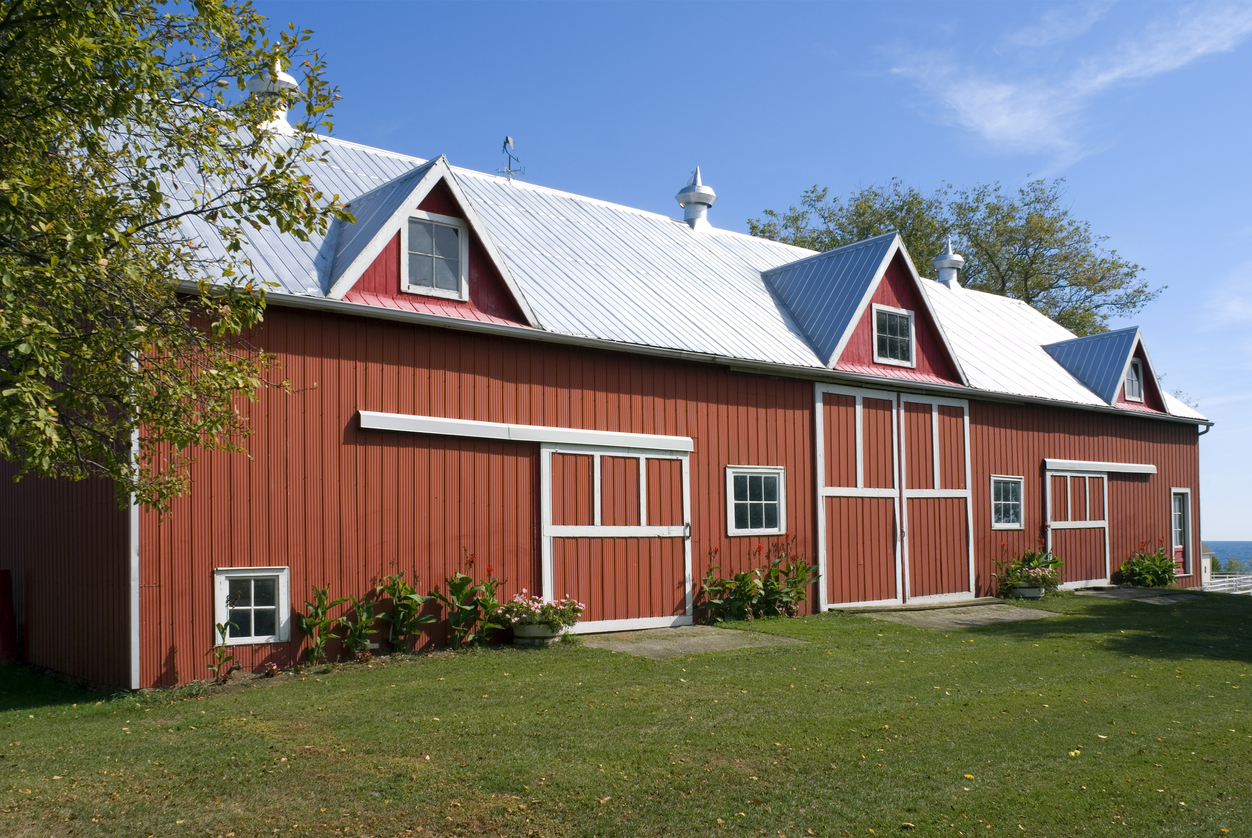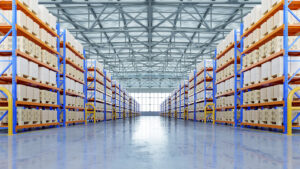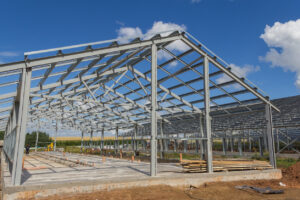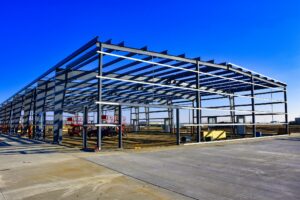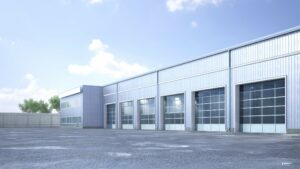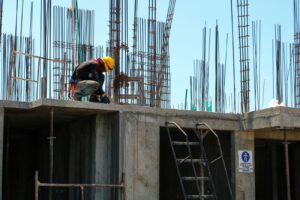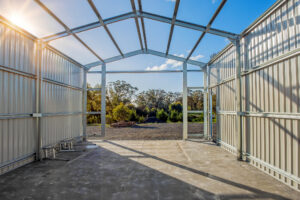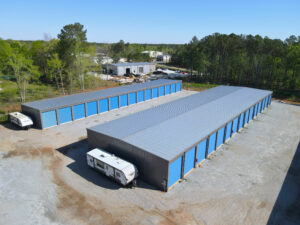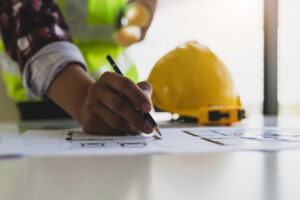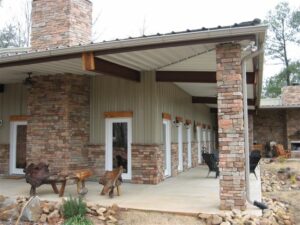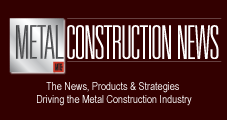Steel buildings and their components have become increasingly popular in the construction industry due to their durability, versatility, and installation cost-effectiveness.
In 2021, the overall construction industry saw a 12% increase in construction starts, and the metal construction segment itself grew by 12.9%. Specific metal project categories also saw significant increases: metal roofing projects (9.3%), exterior light-gauge steel framing (9.5%), interior light-gauge steel framing (3%), and metal wall panels (2.5%).
Steel structures are made up of various components that work together to create a strong and reliable building.
In this article, we will delve into the different aspects of steel buildings, from their basic understanding to the manufacturing process, installation and assembly, and maintenance.
Table of Contents
Understanding the Basics of Steel Buildings
The Importance of Steel in Construction
Steel is a vital material in the construction industry for several reasons. Firstly, it has an exceptional strength-to-weight ratio, making it ideal for constructing large buildings with minimal support.
This strength allows architects and engineers to design innovative and striking structures that push the boundaries of modern architecture. From soaring skyscrapers to intricate bridges, steel’s versatility knows no bounds.
Furthermore, steel is highly resistant to corrosion, which ensures the longevity of the structure. This durability is essential in ensuring that buildings can withstand the test of time and remain safe for occupants. Additionally, steel is a sustainable choice as it is recyclable and reusable without compromising its quality.
By choosing steel, builders can reduce their environmental impact and contribute to a more sustainable future for the construction industry.
Different Types of Steel Buildings
Steel buildings come in various forms to cater to different needs. One common type is the clear-span steel building, which features large, open interiors without the need for interior columns. This design is not only visually appealing but also offers practical benefits such as flexibility in layout and ease of movement within the space.
Clear-span steel buildings are a choice for applications that require a lot of uninterrupted space, such as warehouses, aircraft hangars, and sports facilities.
Did You Know?
Unlike wooden buildings that need load bearing walls or columns, steel frames are strong enough to stand on their own – up to 350’ feet wide and 100’ high.
Another type of steel building is the multi-span steel structure, which incorporates interior columns to support the roof and walls. This design is commonly used for offices, retail spaces, and commercial buildings where a division of space is necessary.
The presence of interior columns allows for greater customization of the interior layout and can accommodate various functions within the same building. Multi-span steel buildings offer a balance between structural stability and design flexibility, making them a popular choice for a wide range of applications.
The Anatomy of Steel Buildings
Structural Framework: The Backbone of Steel Buildings
The structural framework is the backbone of any steel building. It consists of primary and secondary structural components that provide stability and support. The primary components, such as columns and beams, bear the weight of the building and transfer it to the foundation.
Secondary components, including purlins and girts, connect the primary components and provide additional support for the building’s walls and roof.
Steel buildings have durability and strength, and the structural framework is a key factor in ensuring these qualities. The precise engineering and placement of each component are crucial in creating a stable and secure structure that can withstand various environmental conditions.
The Role of Secondary Components
Secondary components play a significant role in steel buildings. Purlins, for example, run parallel to the roof slope and provide support to the roof panels. Girts, on the other hand, are horizontal members that support the walls and can act as a base for interior finishes.
Other secondary components include eave struts, base angles, and bracing systems, all of which contribute to the overall stability and durability of steel buildings.
Each secondary component works in conjunction with the primary structural elements, ensuring that the entire system functions seamlessly.
From providing lateral support to enhancing the building’s resistance to forces like wind and snow loads, these components are essential in creating a robust steel building.
The Significance of Cladding in Steel Buildings
Cladding is the external covering of a steel building and serves both aesthetic and functional purposes. It protects the structure from external elements and helps maintain a comfortable internal environment.
Common types of cladding include metal panels, insulated panels, and masonry. The choice of cladding material depends on factors such as climate, budget, and desired appearance.
Pro tip:
Proper insulation is vital for maintaining comfortable temperatures within your steel building. Poor insulation can result in costly temperature fluctuations, causing HVAC systems to work harder.Carefully consider your insulation choices for optimal climate control and energy savings.
Aside from its protective role, cladding also contributes to the overall design and visual appeal of a steel building. Architects and designers often incorporate cladding choices into the building’s aesthetic concept, using different colors, textures, and finishes to achieve the desired look.
Additionally, cladding materials can offer energy efficiency benefits, helping to regulate temperature and reduce heating or cooling costs within the building.
The Manufacturing Process of Steel Buildings
From Raw Material to Finished Product
The manufacturing process of steel buildings involves several stages. It begins with the extraction of iron ore, which is then converted into steel through a process called smelting. The smelting process involves the use of high temperatures to extract the iron from the ore and combine it with carbon to create steel.
Once the steel is produced, it undergoes rigorous testing to ensure it meets the required quality standards before moving on to the next stage.
After the steel is produced, it is sent to a steel mill where it undergoes further processing. This includes shaping the steel into various sections such as beams, columns, and sheets through processes like rolling, cutting, and bending.
Skilled workers operate heavy machinery to transform raw steel into the specific shapes needed for the construction of steel buildings. Precision is key during this stage to ensure that the steel components fit together seamlessly during assembly.
Did You Know?
SteelCo dropships PEMB materials nationwide and offers steel erection and construction services in the Southeast United States. We provide commercial general contracting expertise that takes your projects all the way from concept and design to completion and “certificate of occupancy.”
Quality Control in Steel Building Production
Quality control is a critical aspect of the manufacturing process of steel buildings. To maintain high standards, strict protocols are followed at every step of production. Various tests are conducted on the steel, including tensile strength testing, impact testing, and dimensional checks, to verify its quality and durability.
Additionally, nondestructive testing methods such as ultrasonic testing and magnetic particle inspection are employed to detect any hidden defects that could compromise the integrity of the steel components.
Inspections are carried out at different stages of production to identify any potential issues and make necessary adjustments. Quality control inspectors meticulously examine the steel components for any imperfections or deviations from the design specifications. Any nonconforming parts are either repaired or rejected to ensure that only high-quality components are used in the construction of steel buildings.
By adhering to stringent quality control measures, manufacturers can guarantee the structural integrity and longevity of steel buildings for their intended purpose.
Installation and Assembly of Steel Buildings
Preparing the Site for Installation
Before installing a steel building, proper site preparation is essential. This includes clearing the area of any debris, leveling the ground, and ensuring adequate drainage. Additionally, the foundation must be constructed according to specifications to provide a stable base for the building.
Proper planning and preparation help streamline the steel building installation process and prevent complications during assembly.
Furthermore, it is crucial to consider factors such as local building codes and regulations when preparing the site for installation. Compliance with these requirements ensures the safety and structural integrity of the steel building. Site inspection and approval from relevant authorities may be necessary before commencing the assembly process.
The Assembly Process: Step by Step
The assembly of a steel building typically involves the following steps:
-
- Unloading and organizing the building components
- Erecting the primary structural components
- Attaching the secondary components, such as purlins and girts
- Installing the cladding and roof panels
- Completing the finishing touches, such as doors and windows
Each step in the steel building installation process requires precision and attention to detail to ensure the structural integrity and functionality. Proper alignment and fastening of components are essential to guarantee the stability and durability of the structure.
Additionally, following the manufacturer’s instructions and recommendations is crucial to avoid errors and ensure a successful assembly.
Maintenance and Durability of Steel Buildings
Ensuring Longevity: Maintenance Tips for Steel Buildings
Maintaining a steel building is crucial for maximizing its lifespan. Regular inspections should be carried out to identify any signs of corrosion or damage. If any issues are detected, they should be addressed promptly to prevent further deterioration.
Additionally, cleaning the building’s exterior and ensuring proper drainage can help prevent moisture buildup, which can contribute to corrosion.
When it comes to maintenance, it’s important to consider the specific needs of your steel building. For instance, if your building is located in an area with high humidity or near the coast, it may require more frequent inspections and maintenance to combat the effects of saltwater corrosion.
On the other hand, buildings in arid climates may need additional attention to prevent the accumulation of dust and debris, which can also impact the structure’s durability.
The Lifespan of Steel Buildings: What to Expect
Steel buildings are known for their exceptional durability, often surpassing other construction materials. With proper maintenance and care, a well-built steel building can last for decades or even centuries.
The lifespan of a steel building depends on various factors, including the quality of the materials used, the design, and the environmental conditions it is exposed to.
One of the key factors that contribute to the longevity of steel building installations is the quality of the steel itself. High-quality steel, such as galvanized steel, is more resistant to corrosion and can withstand harsh weather conditions. Additionally, the design of the building plays a crucial role in its lifespan.
Properly engineered steel buildings with adequate support systems and reinforcements can better withstand external forces, such as wind and seismic activity.
Moreover, the environmental conditions to which a steel building is exposed can significantly impact its lifespan. Buildings located in areas with high levels of air pollution or industrial emissions may experience accelerated corrosion. On the other hand, buildings in regions with milder climates and lower pollution levels may have a longer lifespan due to reduced exposure to corrosive elements.
As technology and construction practices continue to advance, the lifespan of steel buildings is going to increase even further. Innovations in protective coatings, such as advanced paint systems and corrosion-resistant treatments, are continuously in development to enhance the durability of steel structures.
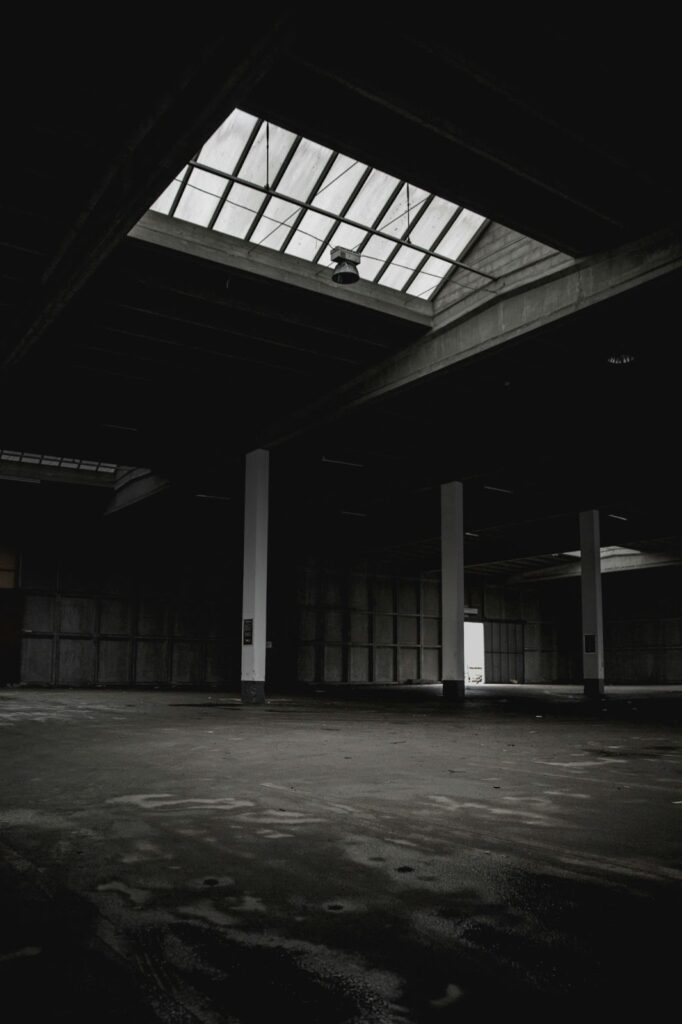 Conclusion
ConclusionSteel buildings compose of different components that work in harmony to create reliable and long-lasting buildings. Understanding the basics of steel buildings, including the importance of steel in construction and the various types available, is essential for making informed decisions.
Additionally, knowledge of the manufacturing process, installation, and assembly procedures, as well as maintenance tips, can contribute to the overall success and longevity of steel buildings.
By exploring the key components of steel buildings, we gain a deeper appreciation for the intricate design and engineering that goes into these remarkable structures.
SteelCo has been a leader in the steel building materials and construction services industry for over 20 years. Steel buildings throughout the US are comprised of our PEMB red-iron materials as Commercial buildings, Warehouses, Worship centers, Aircraft hangars, Storage Facilities, Recreational buildings and much more. Learn more about our services.
———————-
Frequently Asked Questions
How long does it take to construct a steel building?
The construction timeline for a steel building depends on various factors such as the size, complexity, and location of the project. Generally, steel buildings have faster construction time than traditional buildings, with some projects taking as little as a few weeks to complete.
Do steel buildings require a lot of maintenance?
Steel buildings require minimal maintenance compared to traditional buildings. Regular inspections and cleaning can help prevent corrosion and extend the lifespan of the structure.
Are steel buildings fire-resistant?
Steel has inherent fire-resistant properties, but the level of fire resistance depends on the type of steel and the design of the building. Steel buildings designs can meet specific fire-resistance ratings, making them suitable for various applications.
How energy-efficient are steel buildings?
Steel building designs can be highly energy-efficient. By incorporating insulation and energy-efficient features such as skylights and operable windows, steel buildings can help reduce energy consumption and operating costs.
Are steel buildings customizable?
Steel buildings offer a high level of customization to meet the specific needs of different users. From the size and layout to the exterior design and interior finishes, steel building designs can suit various preferences and requirements.
How do steel buildings compare to other types of buildings in terms of cost?
Steel buildings are generally more cost-effective than traditional construction methods, especially for large-scale projects. However, the cost of a steel building can vary depending on factors such as the size, complexity, and location of the project.
How do steel buildings perform in extreme weather conditions?
Steel buildings can withstand extreme weather conditions such as high winds, heavy snow, and earthquakes. The structural integrity of steel building installations make them well-suited for regions with challenging environmental conditions.
What is the lifespan of a steel building?
Steel buildings can last for several decades with proper maintenance. By following recommended maintenance guidelines and addressing any issues promptly, steel buildings can maintain their structural integrity and functionality over an extended period.









